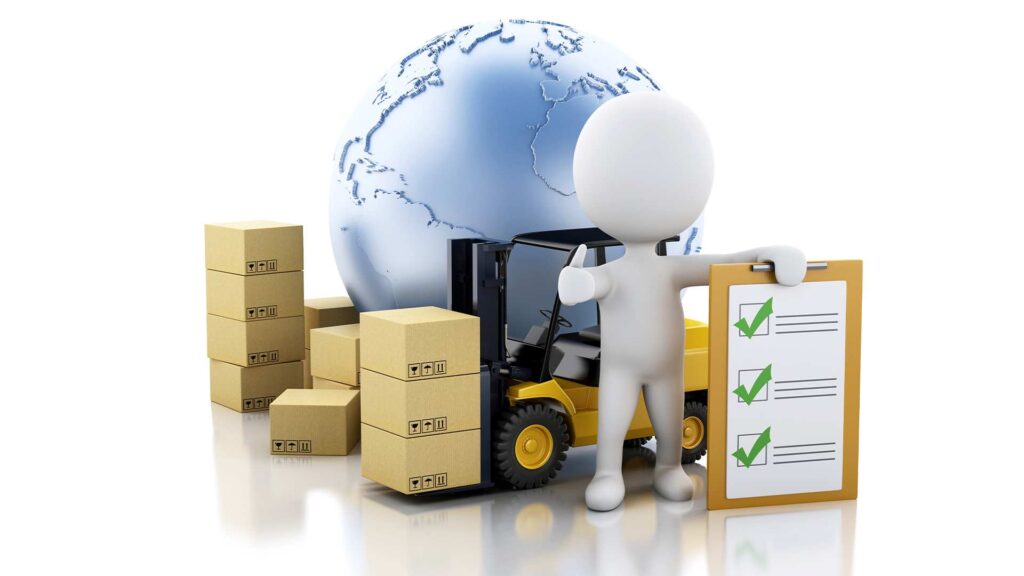How does Integrated Logistics benefit businesses? In today’s fast-paced and interconnected world, efficient logistics management is the backbone of successful businesses. The ability to move goods seamlessly from point A to point B, while minimizing costs and maximizing customer satisfaction, is the key to staying competitive. This is where Integrated Logistics comes into play, reshaping the way companies approach their supply chain management.
Understanding Integrated Logistics

What is Integrated Logistics? Integrated Logistics, often referred to as Integrated Supply Chain Management, is a holistic approach to logistics and supply chain management. It goes beyond the traditional view of logistics as simply moving goods and focuses on optimizing the entire process. At its core, Integrated Logistics seeks to break down the silos that can exist within an organization, fostering collaboration between different departments such as procurement, production, warehousing, and transportation.
The Components of Integrated Logistics

What are the key components of an Integrated Supply Chain Management system? Let us have a look at it.
1. Visibility and Transparency:
Integrated Logistics hinges on real-time visibility and transparency across the entire supply chain. With advanced technology and software solutions, companies can track their shipments, inventory levels, and production status in real-time. This visibility enables quicker decision-making and the ability to proactively address potential issues.
2. Optimized Inventory Management:
One of the significant benefits of Integrated Supply Chain Management is optimized inventory management. By having a clear view of inventory levels and demand forecasts, companies can reduce excess inventory, carrying costs, and the risk of stockouts. This leads to significant cost savings and improved cash flow.
3. Streamlined Transportation:
Integrated Supply Chain Management integrates transportation into the overall supply chain strategy. This involves selecting the right carriers, routes, and modes of transportation to ensure timely and cost-effective deliveries. It also includes considerations for sustainability and reducing the carbon footprint.
4. Effective Supplier Collaboration:
Collaboration with suppliers is crucial for the success of Integrated Supply Chain Management. By sharing data and insights, companies and their suppliers can work together to streamline processes, reduce lead times, and improve the overall efficiency of the supply chain.
5. Customer-Centric Approach:
Integrated Logistics places the customer at the center of the supply chain. It focuses on delivering products to customers when and where they want them. This customer-centric approach enhances customer satisfaction and builds brand loyalty.
The Benefits of Integrated Logistics

Cost Reduction:
Integrated Supply Chain Management helps reduce operational costs by eliminating redundancies and optimizing processes. This includes minimizing transportation costs, reducing inventory carrying costs, and lowering warehousing expenses.
Improved Efficiency:
Streamlined processes and better coordination lead to improved operational efficiency. This means faster order fulfillment, reduced lead times, and increased productivity.
Enhanced Customer Satisfaction:
With Integrated Supply Chain Management, companies can offer faster delivery times, accurate order tracking, and better communication with customers. This leads to higher customer satisfaction and repeat business.
Risk Mitigation:
Integrated Supply Chain Management allows for better risk management. By having a clear view of the supply chain, companies can identify and address potential disruptions, such as supply chain bottlenecks or transportation delays, before they become major issues.
Sustainability:
Integrated Supply Chain Management often leads to more sustainable supply chain practices. By optimizing transportation routes and reducing excess inventory, companies can reduce their environmental impact.
Implementing Integrated Logistics

Implementing Integrated Logistics requires a strategic approach:
1. Invest in Technology:
Adopting the right technology and software solutions is essential for real-time visibility and data-driven decision-making.
2. Collaboration:
Foster collaboration between different departments and suppliers. Effective communication is key to the success of Integrated Supply Chain Management.
3. Continuous Improvement:
Integrated Supply Chain Management is an ongoing process. Regularly assess and refine your supply chain strategies to adapt to changing market conditions and customer demands.
4. Training and Education:
Ensure that your team has the necessary skills and knowledge to implement Integrated Supply Chain Management effectively. Invest in training and education programs.
5. Key Performance Indicators (KPIs):
Define KPIs to measure the success of your Integrated Supply Chain Management efforts. Monitor these KPIs regularly and use the data to drive improvements.
An Example of Integrated Logistics in Action

Consider a global e-commerce giant that relies on integrated logistics to serve millions of customers worldwide. When a customer places an order on their platform, the Integrated Supply Chain Management system springs into action:
– Inventory Management: The system instantly checks the inventory status across various warehouses and locations, determining the nearest and best-suited facility to fulfill the order.
– Order Processing: Once the ideal fulfillment center is identified, the system automatically generates the order and assigns it for picking and packing.
– Shipping Optimization: Integrated with transportation systems, the logistics platform selects the most cost-effective and efficient shipping method, factoring in variables like delivery time, cost, and environmental impact.
– Real-time Tracking: Throughout the shipping journey, the system provides real-time tracking updates to both the customer and the e-commerce company. This transparency enhances the customer experience and enables proactive issue resolution.
– Customer Support: Customer service representatives have instant access to order information, enabling them to respond to inquiries promptly and accurately.
The result? A streamlined, customer-centric, and cost-effective supply chain that positions the e-commerce giant as a leader in the industry.
Conclusion
In Conclusion, Integrated Logistics is not just a buzzword; it’s a strategic approach that can transform the way companies manage their supply chains. By breaking down silos, optimizing processes, and focusing on collaboration and visibility, businesses can reduce costs, improve efficiency, and enhance customer satisfaction. In a world where every competitive edge matters, Integrated Logistics is a powerful tool that should not be overlooked.
At Galaxy Freight, we understand the significance of Integrated Supply Chain Management in today’s business landscape. With our extensive experience, advanced technology, and a global network of partners, we are committed to providing seamless, efficient, and cost-effective logistics solutions tailored to meet the unique needs of each client.
Experience the power of integrated logistics with Galaxy Freight. Contact us today to discuss your logistics needs and discover how our expertise can transform your supply chain, driving efficiency and success in your operations. Together, let’s embark on a journey of streamlined and Integrated Supply Chain Management excellence.



